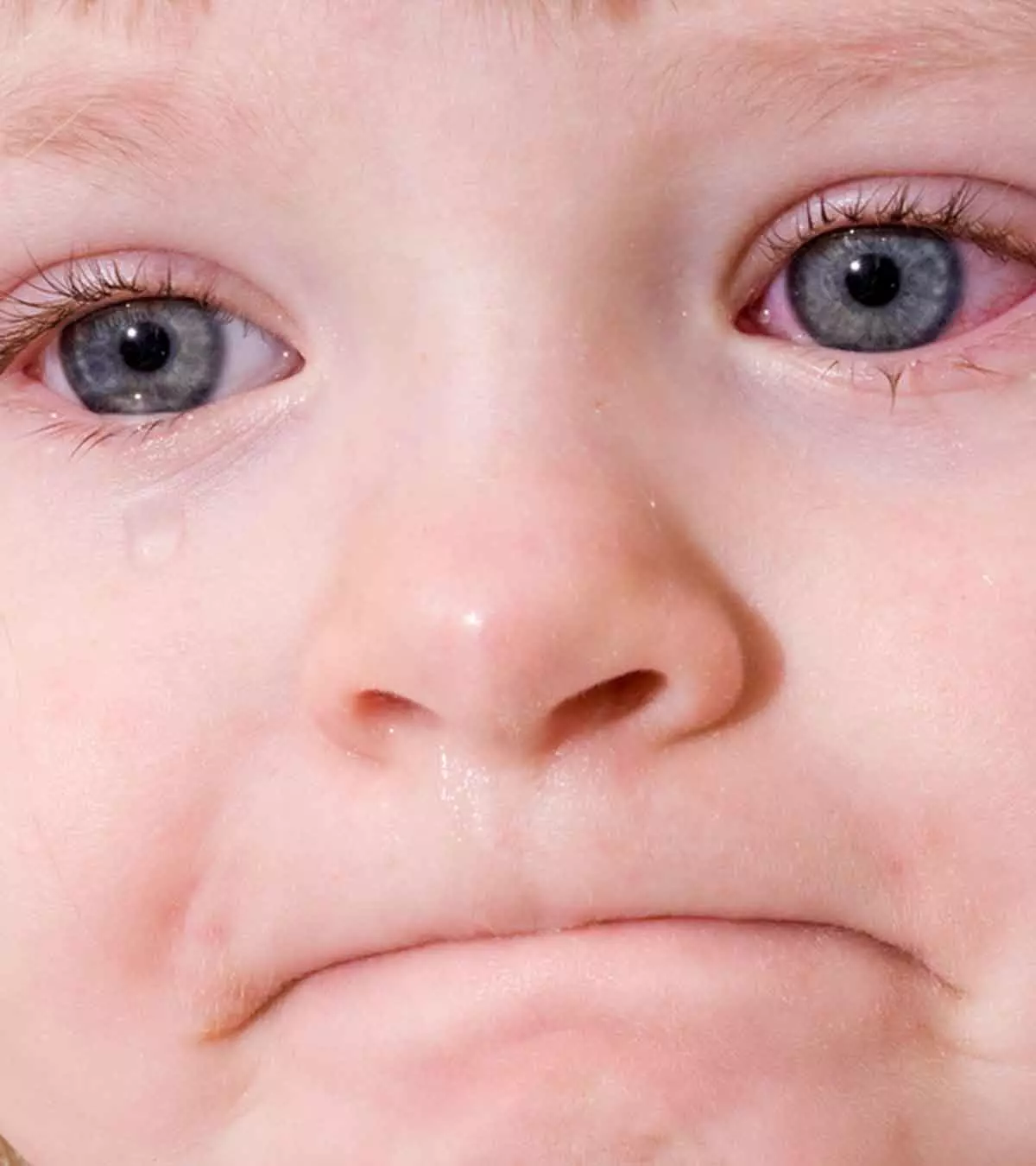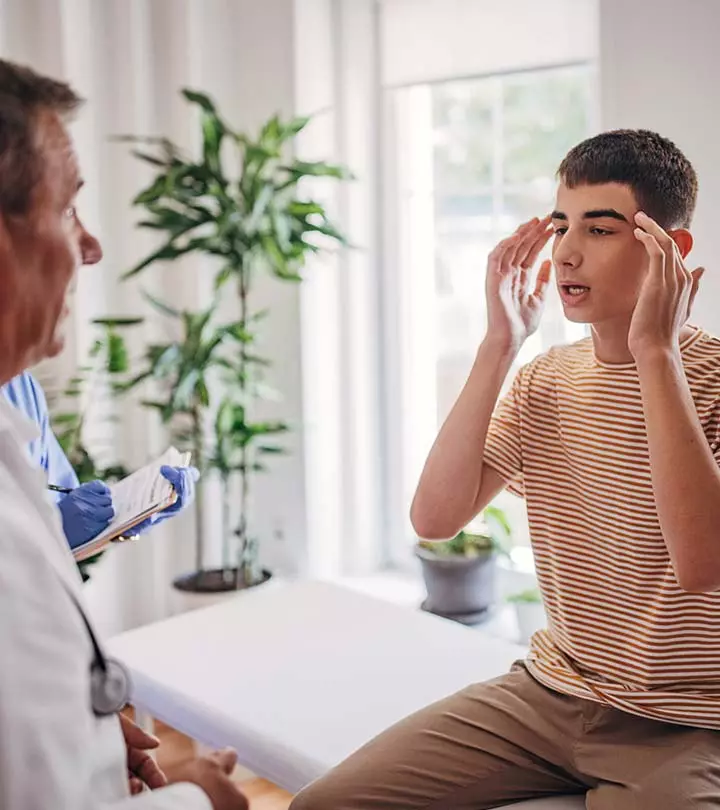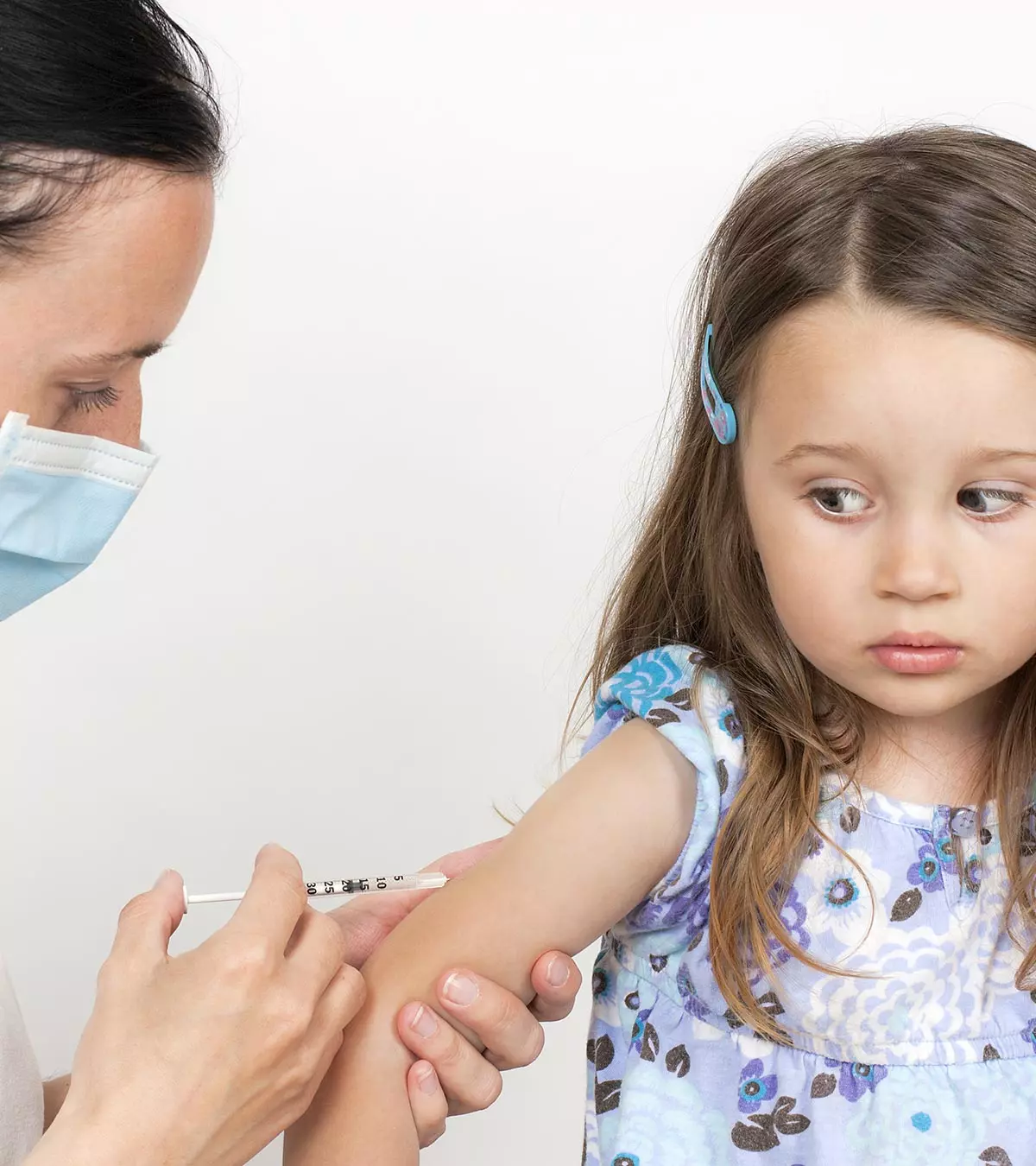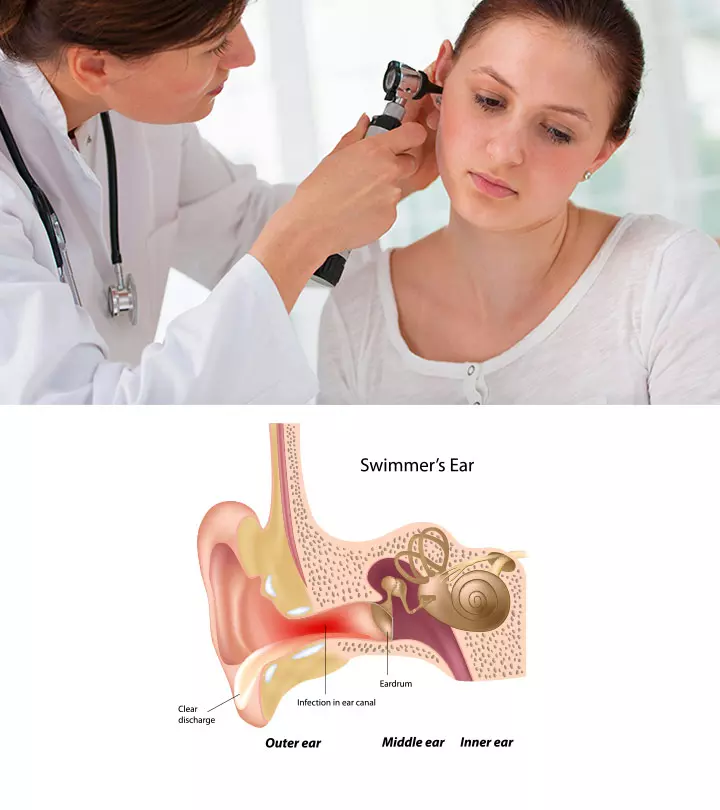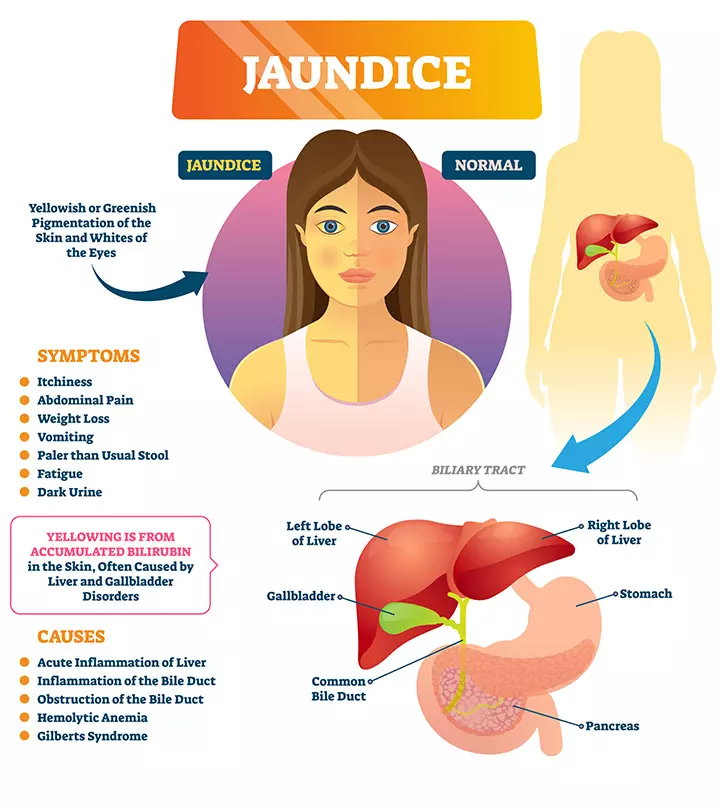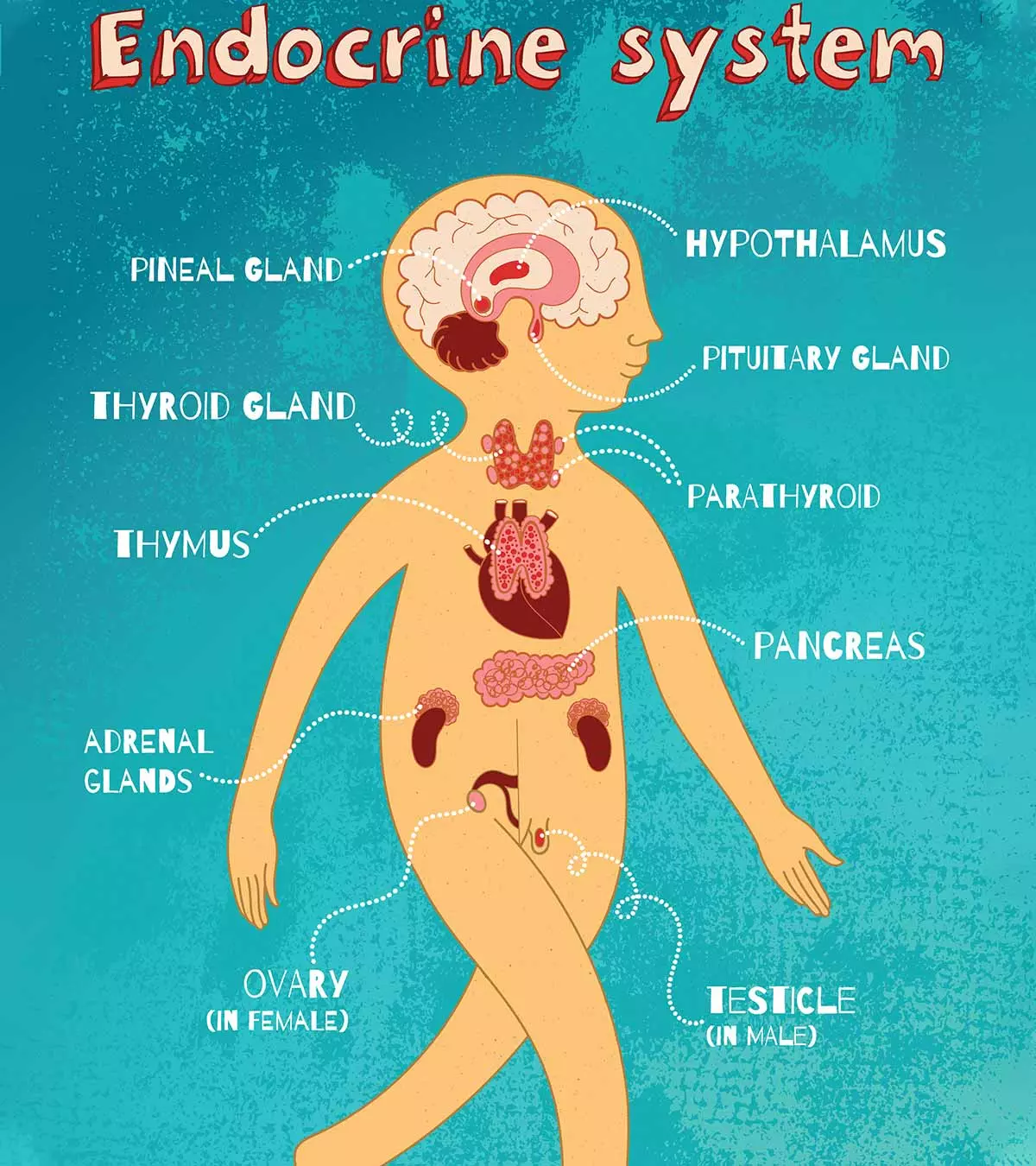
Image: ShutterStock
The endocrine system comprises glands in the body that secrete hormones. Hormones are chemical-signaling molecules that help the body’s complicated processes, such as metabolism and growth, to work together. They also affect how a person’s immune system works and behaves. As a result, the endocrine system regulates hormones to govern various body activities.

Read on to learn about the endocrine system’s activities and parts, as well as major endocrine problems, their symptoms, and how to avoid them.
Key Pointers
- The endocrine system is responsible for maintaining hormone levels in the body.
- The pituitary gland, thyroid gland, hypothalamus, and other parts comprise the endocrine system.
- Delayed puberty, hormone deficiency, and diabetes mellitus are some problems associated with the endocrine system.
What Does The Endocrine System Do?
The main role of the endocrine system is to secrete hormones into the bloodstream. These hormones are secreted in very small amounts in order to produce an effect on specific cells or systems in the body. It is all about balance – low levels as well as high levels of a hormone lead to disease. These hormones reach different body parts to regulate various functions. These functions include (1):
- Regulate metabolism
- Control growth and development
- Reproduction
- Control the mood
- Functions of various organs
- Regulate sleep patterns
 Quick fact
Quick factWhat Are The Parts Of The Endocrine System?
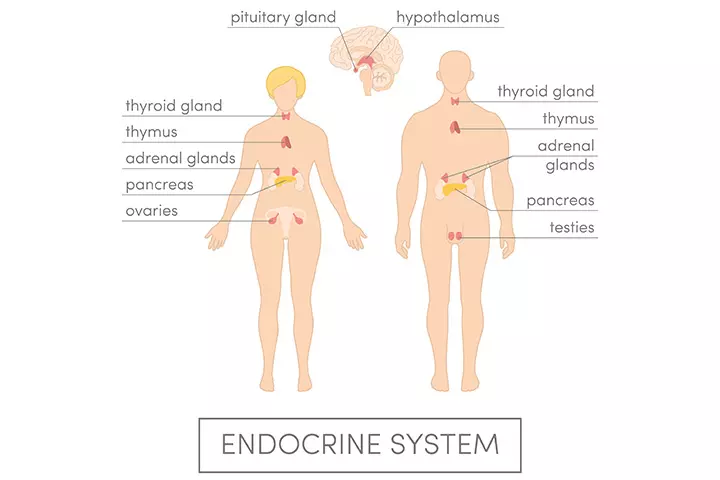
The major glands in the endocrine system are (2):
1. Hypothalamus
Hypothalamus is located in the lower part of the brain and connects the endocrine system with the central nervous system through the pituitary gland
. The nerve cells of the hypothalamus control the hormone release from the pituitary gland, which regulates the other endocrine glands’ hormone secretions.
The hypothalamus signals the production of pituitary hormones, based on the brain’s sensations, such as thirst, hunger, temperature, light exposure, and sleep. The following are the hormones released by the hypothalamus (3).
- Thyrotropin-releasing hormone (TRH) reaches the pituitary gland and stimulates the release of thyroid-stimulating hormone (TSH) and prolactin (PRL).
- Gonadotropin-releasing hormone (GnRH) primarily stimulates the release of follicle-stimulating hormone (FSH) and luteinizing hormone (LH). The secondary effects are increased release of estrogen and progesterone in females and testosterone in males.
- Growth hormone-releasing hormone (GHRH) signals the pituitary gland to release growth hormone (GH).
- Corticotropin-releasing hormone (CRH) signals pituitary cells to release corticotropin, also called adrenocorticotropic hormone (ACTH), to stimulate the release of adrenal hormones. This is also secreted by the placenta during pregnancy to prevent a maternal immune system attack on the fetus and determine the duration of gestation.
- Somatostatin is an inhibitory hormone that inhibits the release of growth hormone (GH) and thyroid-stimulating hormone (TSH) from the pituitary gland. This is also secreted in the pancreas and intestine, where it inhibits various digestive hormones.
- Dopamine is a hormone and neurotransmitter that inhibits the secretion of prolactin (PRL) from the pituitary gland. This also plays a role in activating brain reward centers and modulating the brain’s motor control centers. Dopamine secreting cells are also seen in other parts of the body that act locally.
2. Pituitary gland
The pituitary gland is located at the base of the brain. This pea-sized gland is the master gland of the endocrine system. Based on the hypothalamic signals, the pituitary gland sends inhibitory or stimulatory hormones to the other endocrine glands.
The following hormones are secreted by the anterior part of the pituitary gland (4).
- Growth hormone (somatotropin) stimulates growth, development, and metabolism of the body. It controls cell regeneration and also plays vital roles in the utilization of nutrients and minerals.
- Prolactin stimulates milk production in lactating women.
- Thyrotropin (thyroid-stimulating hormone) controls the production of thyroid hormones.
- Corticotropin (Adrenocorticotrophin or ACTH) stimulates the production of the adrenal hormones.
- Gonadotropins include FSH and LH. These hormones stimulate the production of reproductive cells and reproductive hormones, such as testosterone in males from the testes and estrogen from the ovary in females.
The following hormones are directly released into the posterior pituitary from the hypothalamus.
- Vasopressin, also known as arginine vasopressin (AVP) or antidiuretic hormone (ADH), regulates osmotic balance, blood pressure, sodium hemostasis, and kidney functions in humans. Vasopressin acts on the kidneys to maintain water balance in the body.
- Oxytocin is a bonding hormone that enhances bonding, such as in the case of male and female or mother and newborn. This hormone increases a person’s trust in other people. Oxytocin also causes smooth muscle contractions, such as the uterus’ contraction during birth and release of milk when the baby suckles.
The pituitary also secretes hormones called endorphins and enkephalins, which block pain signals from the brainstem and spinal cord. Endorphins also play a role in immune system responses of the body.
Beta-melanocyte-stimulating hormone (melanotropin) stimulates melanin production by melanocytes in the skin and suppresses appetite by acting on the hypothalamus.
3. Thyroid gland
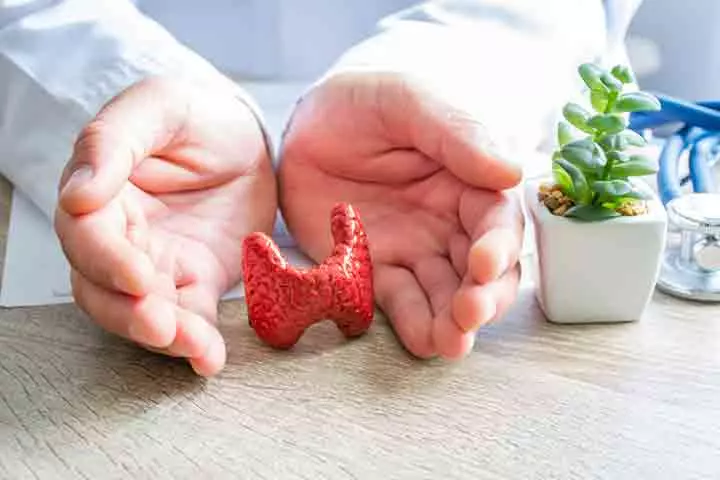
The thyroid gland is a butterfly or a bow-shaped gland located at the front of the lower neck. Triiodothyronine (T3) and thyroxine (T4) are hormones produced by the thyroid gland. Thyroid hormones play an essential role in metabolism, which is the energy production rate from food by body cells. High levels of thyroid hormones cause faster metabolism.
Parafollicular cells or C cells of the thyroid gland make a hormone called calcitonin, which controls calcium and phosphorus’s metabolism in the body. Calcitonin is also produced in other parts of the body, such as in the lungs and intestines. This hormone prevents osteoclast activity from digesting and releasing bone minerals (calcium and phosphorus) into the bloodstream and losing them through kidney excretion.
Thyroid hormones play a significant role in the growth and development of children. These hormones also influence general functions, such as body temperature and bone growth.
4. Parathyroid gland
Parathyroids are four small glands attached to the thyroid gland. They secrete parathyroid hormone (PTH), which regulates the levels of calcium in our body.
5. Adrenal glands
Adrenal glands, also called suprarenal glands, are triangle-shaped glands on top of the kidneys. These glands make several hormones from its outer part called the adrenal cortex, and the inner part called the adrenal medulla.
The following hormones are produced by the adrenal cortex.
- Cortisol (glucocorticoid hormone) controls the use of carbohydrates, proteins, and fats by the body. It regulates blood pressure, blood glucose, and decreases bone formation. Cortisol also helps in the suppression of inflammation in the body.
- Aldosterone (mineralocorticoid hormone) regulates blood pressure and blood pH levels. The hormone regulates electrolytes, such as sodium and potassium, in the blood to maintain blood pH.
- Androgenic steroids and DHEAiA steroid hormone that acts as a precursor for the synthesis of male and female sex hormones in the body. help in the production of sex hormones.
Adrenaline
(epinephrine) and noradrenaline (norepinephrine) are hormones produced by the adrenal medulla. These play a crucial role in stress response and regulate blood pressure and heart rate. They also function as neurotransmittersiChemical messengers in the brain that send signals throughout the body to carry out its vital functions. .
6. Pineal gland
The pineal gland, also called the pineal body, is a tiny pea-shaped endocrine gland located in the middle of the brain. It secretes the hormone melatonin that regulates the circadian rhythm (sleep pattern) in humans.
7. Reproductive glands
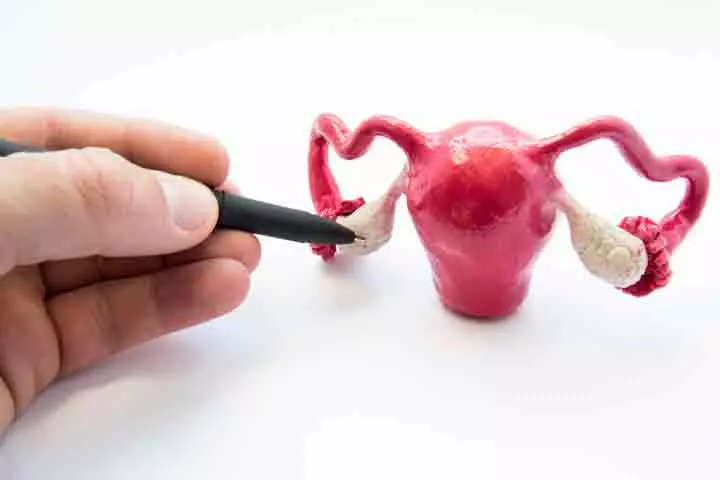
Reproductive glands are also called sex glands or gonads. These are mixed glands since they produce gametes (reproductive cells) and reproductive (sex) hormones. The male gonad produces hormones called androgens (male sex hormone). Testosterone is an important androgen that controls pubertal changes, such as growth and development of secondary sexual characteristics, including facial hair, pubic hair, and voice change.
The ovaries and the uterus are the main organs of the female reproductive system. Ovaries are female gonads located on either side of the uterus in the pelvis. Female hormones, such as estrogen and progesterone, are secreted by the ovaries. Estrogen regulates the secondary sexual characteristics in females, such as breast growth, fat deposit in the hip and thighs, and the growth spurt during puberty. Progesterone and estrogen together regulate the menstrual cycles and play a key role in pregnancy.
8. Pancreatic islets
The pancreas is a part of both the endocrine and digestive systems. The exocrineiGlands that release their substances (enzymes and secretions) through ducts to reach the target organs of the body. cells of the pancreas have digestive functions, whereas the pancreatic islet (islets of Langerhans) has endocrine functions.
The main hormones secreted by islets of Langerhans are:
- Insulin is produced by the pancreas’ beta cells. This hormone is involved in the metabolism of carbohydrates, proteins, and fat in the body. Insulin is made when blood sugar levels are high. It promotes glucose (sugar) absorption from the blood to the liver, fat and skeletal muscles.
- Glucagon is produced by alpha cells of pancreatic islets when blood glucose levels are low. This converts glycogen (glucose storage in the liver and muscles) and releases glucose into the bloodstream.
Somatostatin
(growth hormone-inhibiting hormone), ghrelin (the hunger hormone), and pancreatic polypeptide (PP) are other hormones produced by the endocrine cells of the pancreas.
Problems Of The Endocrine System In Children
Too much or too little of any hormone can cause imbalances in the body functions. Injuries, autoimmuneiA group of medical conditions where the body’s immune system erroneously attacks and damages healthy cells. attacks, tumors, and infections are some of the conditions that could cause endocrine disorders. These disorders could also be a result of genetic factors or acquired factors, such as physical inactivity and an unhealthy diet.
Dysfunction of the hypothalamus or pituitary gland could impact overall endocrine functions in the body. Clinical manifestations may vary depending on the affected gland and the level of hormones made by it.
Although there are several endocrine disorders, children are most vulnerable to the following ones (5).
- Diabetes mellitus

- Thyroid disorders, such as hypothyroidismiFailure of thyroid glands to produce sufficient thyroid hormones, leading to weight gain, tiredness, skin, and other body changes. or hyperthyroidismiA condition marked by excess thyroid hormones in the body, leading to weight loss, increased heart rate, and other symptoms.
- Precocious puberty (early onset)
- Delayed puberty
- Growth hormone deficiency
- Tumors, such as pituitary adenoma
 Quick fact
Quick factSigns And Symptoms Of Endocrine Problems
The following signs and symptoms could indicate endocrine problems in children (5).
- Frequent urination
- Constant weakness or lethargy
- Excess weight gain or loss
- Frequent nausea and belly pain
- Increased thirst
- Increased sweating
- Tremors (involuntary muscle contractions)
- Frequent constipation
- Delay in growth and development
Injuries or diseases of endocrine glands can cause various health conditions. Endocrine disorders due to reduction or lack of hormones require hormone replacement therapy (HRT) to relieve insufficiency symptoms. Excess secretion of hormones also requires medical treatment since this also affects the normal functioning of the body.
You may consult a pediatrician specializing in endocrinology if your child has symptoms of endocrine disorders.
How Can Chemicals Affect The Endocrine System?
Endocrine disruptors are chemicals that may mimic or interfere with human hormones. These chemicals can cause growth, reproductive, immune system, or brain issues in children. Endocrine-disrupting chemicals are found in several common products of daily use or generated during some activities (6).
| Endocrine disruptors | Sources |
| Bisphenol A (BPA) |
|
| Dioxins |
|
| Perchlorate |
|
| Perfluoroalkyl and Polyfluoroalkyl Substances (PFAS) |
|
| Triclosan |
|
| Polychlorinated biphenyls (PCB) |
|
| Polybrominated diphenyl ethers (PBDE) |
|
| Phytoestrogens (genistein and daidzein) |
|
| Phthalates |
|
Children can come in contact with these chemicals through air, water, skin, or food. Even low doses of these chemicals are unsafe since it may cause biological effects. Avoid pollutants and keep chemicals away from the child’s reach. It is impossible to avoid all these listed products/ compounds. Most people get exposed to them on a regular basis. This does not mean that all contact leads to endocrine disruption, but obvious/ high incidence exposures should be limited where possible. Pick non-toxic and child-safe toys, clothes, and other related products.
Tips For Healthy Endocrine System In Children
The following measures might help prevent endocrine problems in children.
- A healthy diet and regular physical activity can help avoid lifestyle-induced hormonal imbalances that lead to diseases such as diabetes, which affects 35 out of 10,000 US youths, according to a CDC report.

- Regular medical follow-ups may help to identify hormonal imbalances before the symptoms develop if there is a family history or any suspicion of imbalance.
- Early screening for children with a positive family history of endocrine issues, such as hypo or hyperthyroidism, and diabetes.
- Seeking medical advice before taking nutritional supplements, growth supplements, or herbal treatments for optimum growth and nutrition.
Frequently Asked Questions
1. What are five interesting facts about the endocrine system?
Here are some interesting facts about the endocrine system.
- The term “endocrine” refers to the process or event of the products released by specific glands into the bloodstream in response to certain stimuli.
- The two systems, the nervous system and the endocrine system, are vital to maintaining homeostasisiAbility of an organism to retain stable internal conditions in accordance with the external changes. .
- The endocrine system constantly monitors hormonal levels in the blood.
- There are various kinds of hormones, such as steroids, proteins, and amino acid derivatives.
- Some glands in the endocrine system are tiny (small marble size), while some are several centimeters long (7).
2. Where is the endocrine system located?
The endocrine system is located in the form of glands (those that release hormones) across the body (8).
3. How can parents help kids understand the importance of the endocrine system?
Parents may explain its fundamentals to help kids understand the endocrine system’s importance. They may converse about how the system controls the hormones which regulate mood, growth, organ activity, metabolism, and reproduction. By connecting it to daily life, utilizing visual aids, fostering inquiries, and exploring supplementary materials, children can develop a profound grasp of and knowledge about the system’s vital role in overall wellness.
4. How does nutrition affect the endocrine system in children?
Nutrition significantly affects the endocrine system. This system comprises glands that release hormones to regulate bodily functions such as growth, mood, metabolism, and sexual functions. And adequate nutrition is required for the functioning of these glands. For example, sufficient protein intake is required for gonadal-hormone release for optimum reproductive functioning, and iodine is required for thyroid functioning, which in turn aids in the functioning of the brain, heart, muscles, and other organs (9) (10).
Proper functioning of the endocrine system is required for regulating metabolism, growth, reproduction, and several other bodily activities. Both hypo and hypersecretion from endocrine glands can result in developmental disorders in children. Fatigue, excess gain or loss of body weight, stunted growth, or increased thirst or sweating may indicate endocrine disturbances in children. Try limiting children’s exposure to certain products that may mimic or interfere with hormonal balance. Ensure that the child has a healthy diet and adequate physical exercise to prevent endocrine problems. Check with a pediatrician if you wish to give your child any growth supplements or other herbal products.
Infographic: Endocrine System Disorders In Children
The endocrine system plays a crucial role in regulating various bodily functions, and children are not exempt from its potential disorders. This helpful infographic reveals common endocrine system disorders that impact children. Learn about these conditions and equip yourself with valuable knowledge for better understanding and care.
Some thing wrong with infographic shortcode. please verify shortcode syntax
It is important to learn about the intricate functioning of your body. One of the most important and complex systems is the endocrine system. Watch this video to learn how this amazing network of glands and hormones is responsible for controlling the functioning of your body.
References
1. The Endocrine System; Hormone Health Network
2. Anatomy of the Endocrine System; Johns Hopkins Medicine
3. Hormones of the Hypothalamus; Biology-pages
4. Pituitary Gland; Hormone Health Network
5. Pediatric Endocrinology; Intermountain Healthcare
6. Endocrine Disruptors;; The National Institute of Environmental Health Sciences
7. Susanne Hiller-Sturmhöfel and Andrzej Bartke; The Endocrine System; NCBI
8. Endocrine System; Cleveland Clinic
9. Human Nutrition; The endocrine system; UH Pressbooks, The University of Hawai’i
10. ToxFAQsTM for Iodine; Centers For Disease Control And Prevention
Community Experiences
Join the conversation and become a part of our nurturing community! Share your stories, experiences, and insights to connect with fellow parents.
Read full bio of Dr. Wayne Hough
Read full bio of Dr Bisny T. Joseph
Read full bio of Dr. Ritika Shah
Read full bio of Anindita Ghatak









